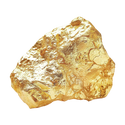Alexander the Great Necklace
£5,800
Details
Authentic Macedon silver drachm coin set in 18K yellow gold.
Handmade in Rome.
History
Measurements
Delivery
Care






Alexander III ‘The Great’
(DRACHM)
(DRACHM)
The coinage of Alexander the Great, particularly the silver drachma, often depicted him with a lion scalp, symbolising his strength and heroic conquests. These coins were crucial in spreading his image and influence across his vast empire.

Gold
(18K)
(18K)
It is a dense, soft, malleable, and ductile metal. Gold is highly valued for its beauty, rarity, and resistance to corrosion. It does not tarnish or corrode over time, making it a perfect choice for jewellery.
Our items are handmade in our atelier in Rome.
Delivery is estimated at 4-6 weeks from when the order is placed with the atelier, but we always endeavour to deliver sooner. Our team will be in touch to keep your updated at every stage of production.
Alternatively please contact shop@dubini.co.uk


